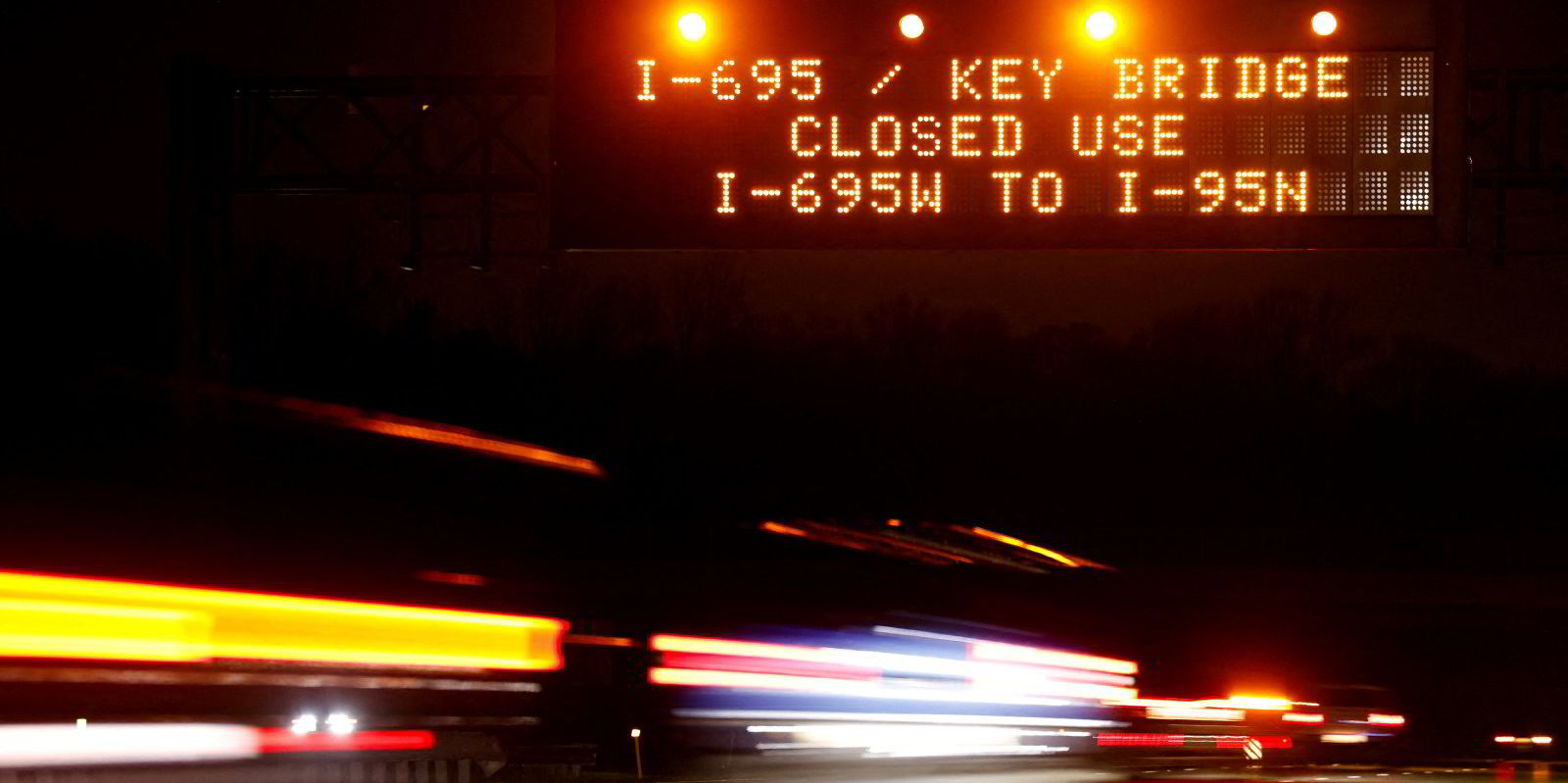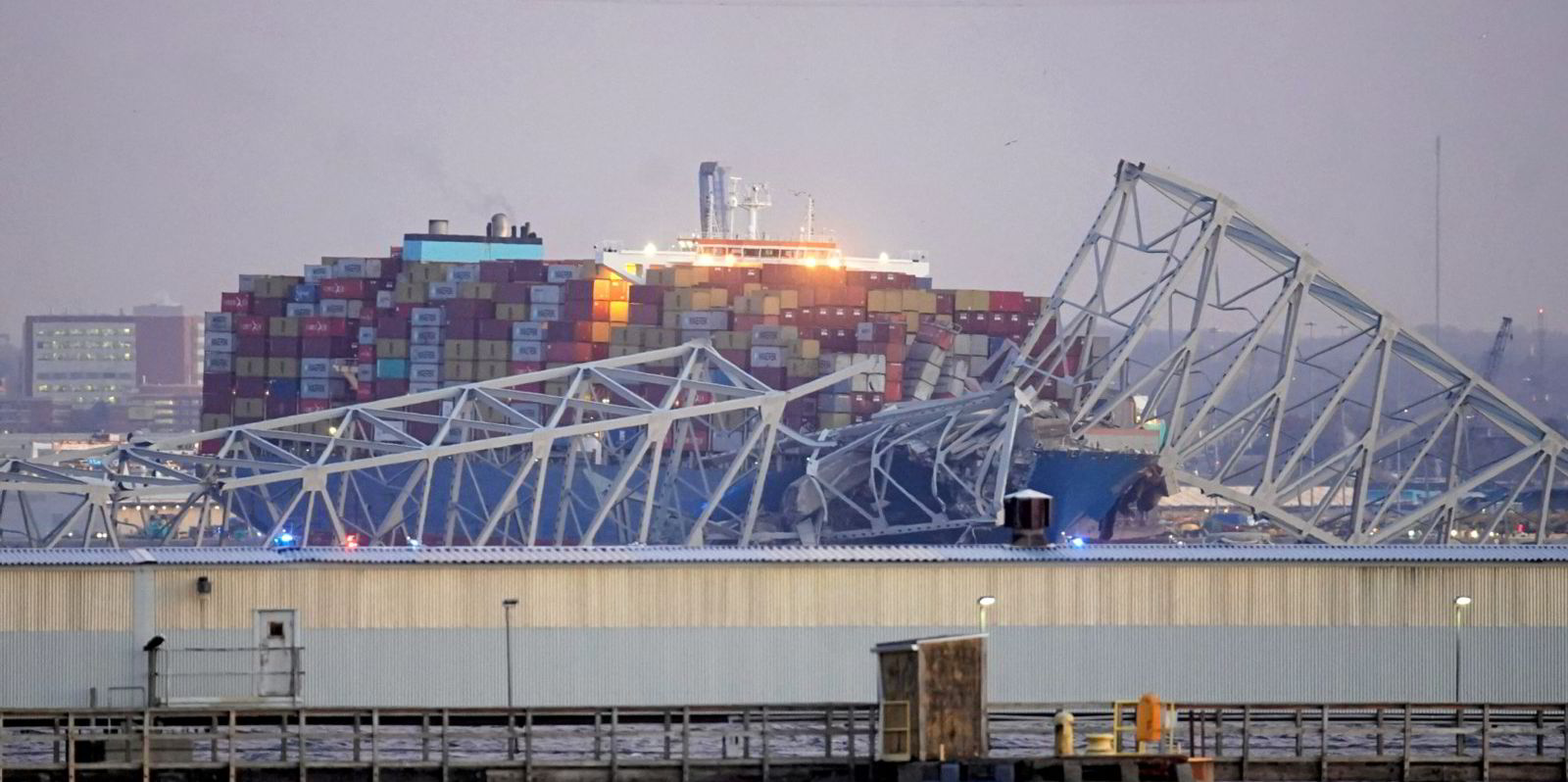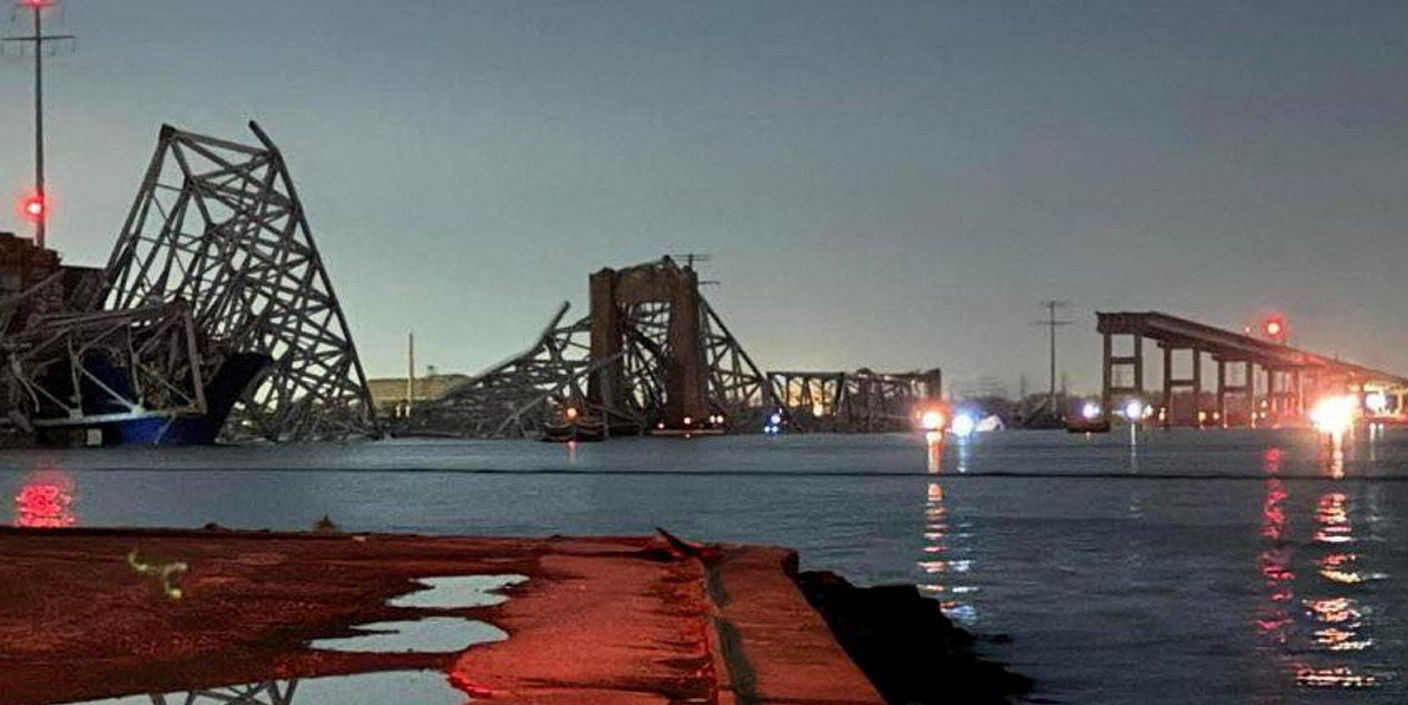A sudden change of course sent the Maersk-chartered boxship Dali straight into a support pillar of the Francis Scott Key Bridge in Baltimore on Tuesday morning.
The official cause of the accident that collapsed the structure is not yet known.
But video and traffic data has shed more light on the incident that threw at least seven vehicles and 20 people into very cold water.
MarineTraffic data shows the 9,962-teu Dali (built 2015) setting off from Baltimore’s Seagirt Marine Terminal at around 00:24 local time (04:24 GMT) on 26 March.
Its speed steadily increased and it held a straight route southeast along the Patapsco River.
Then at 01:25 MarineTraffic data shows that the ship suddenly diverted from its straight course and began to slow.
Around this time, video footage reveals that all lights on the exterior of the ship suddenly turned off. Smoke began emanating from the funnel.
The Dali hit a support pillar three minutes later.
An unclassified Cybersecurity and Infrastructure Security Agency report said the container ship “lost propulsion” as it was leaving port and warned Maryland officials of a possible collision, ABC reported.
“The vessel notified MD Department of Transportation that they had lost control of the vessel and an allision [a ship collision] with the bridge was possible,” the report said.
Denmark’s Maersk said in a statement: “We are horrified by what has happened in Baltimore and our thoughts are with all of those affected.”
The group said the ship was operated by Synergy Marine in Singapore and time-chartered by Maersk, with Maersk cargo on board.
No Maersk crew or personnel were on the vessel.
“We are closely following the investigations conducted by authorities and Synergy, and we will do our utmost to keep our customers informed,” the company added.
Maryland governor Wes Moore has declared a state of emergency.
He said: “We are working with an interagency team to quickly deploy federal resources from the Biden administration.”
He thanked the “brave men and women who are carrying out efforts to rescue those involved and pray for everyone’s safety”.

US transportation secretary Pete Buttigieg offered his department’s support to the local authorities.
“I’ve spoken with Governor Moore and Mayor [Brandon] Scott to offer [the department’s] support following the vessel strike and collapse of the Francis Scott Key bridge,” he added.
“Rescue efforts remain underway and drivers in the Baltimore area should follow local responder guidance on detours and response.”
The now-notorious container ship at the centre of the Baltimore bridge disaster was involved in a previous collision in Antwerp eight years earlier.
In 2016, the vessel allided with a berth at the Belgian port during unmooring, a Vessel Finder report said at the time.
The accident happened in good weather and was caused by master and pilot error, the report added.
The vessel had a large amount of stern momentum, causing it to hit the stone wall of the quayside.
The Dali suffered damage to the stern and transom. It remained afloat, but needed repairs to hull breaches near the waterline.
The berth was reported to be seriously damaged. No injuries were reported on the ship or ashore.
The boxship was under the control of Oceanbulk Container Management of Greece at the time.
The vessel was built by Hyundai Heavy Industries in South Korea. The Dali was chartered by Maersk at the time, as it is now.
Current manager Synergy Marine told TradeWinds the 2016 accident happened before it took over technical management.
There are no port state control detentions on the Dali’s record.
UK insurer Britannia P&I said it was working closely with the ship manager and relevant authorities “to establish the facts and to help ensure that this situation is dealt with quickly and professionally”.
“In the meantime, our thoughts are with everyone affected by this incident,” the company added.




